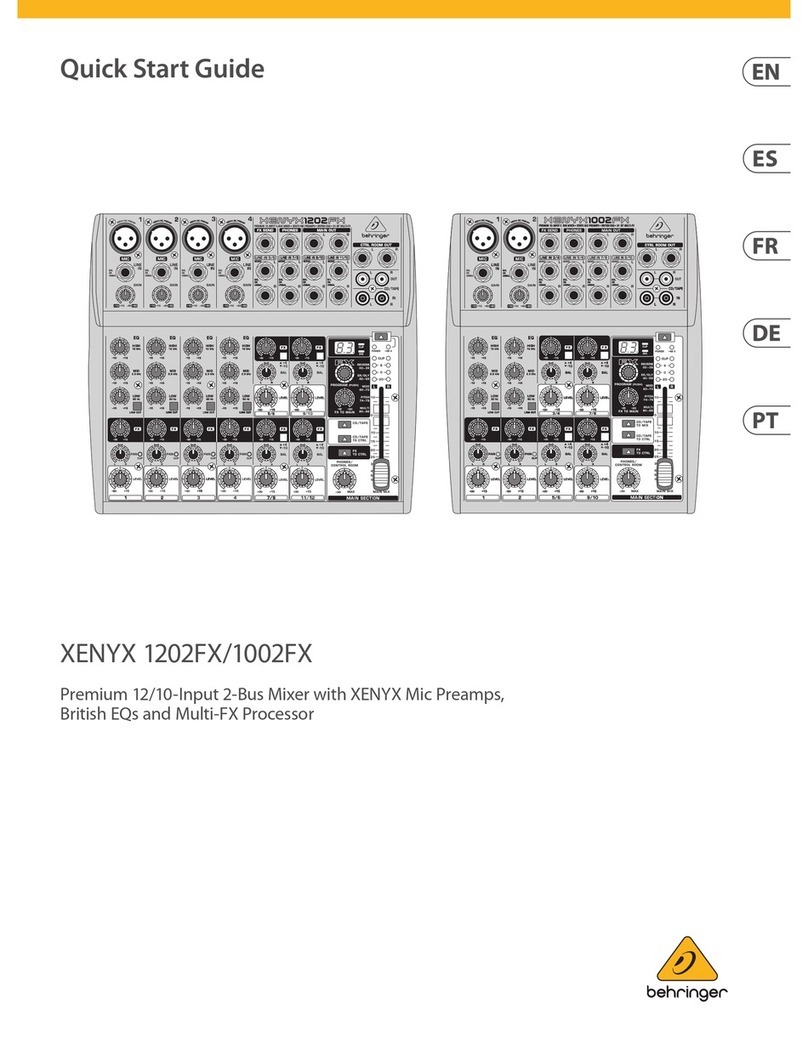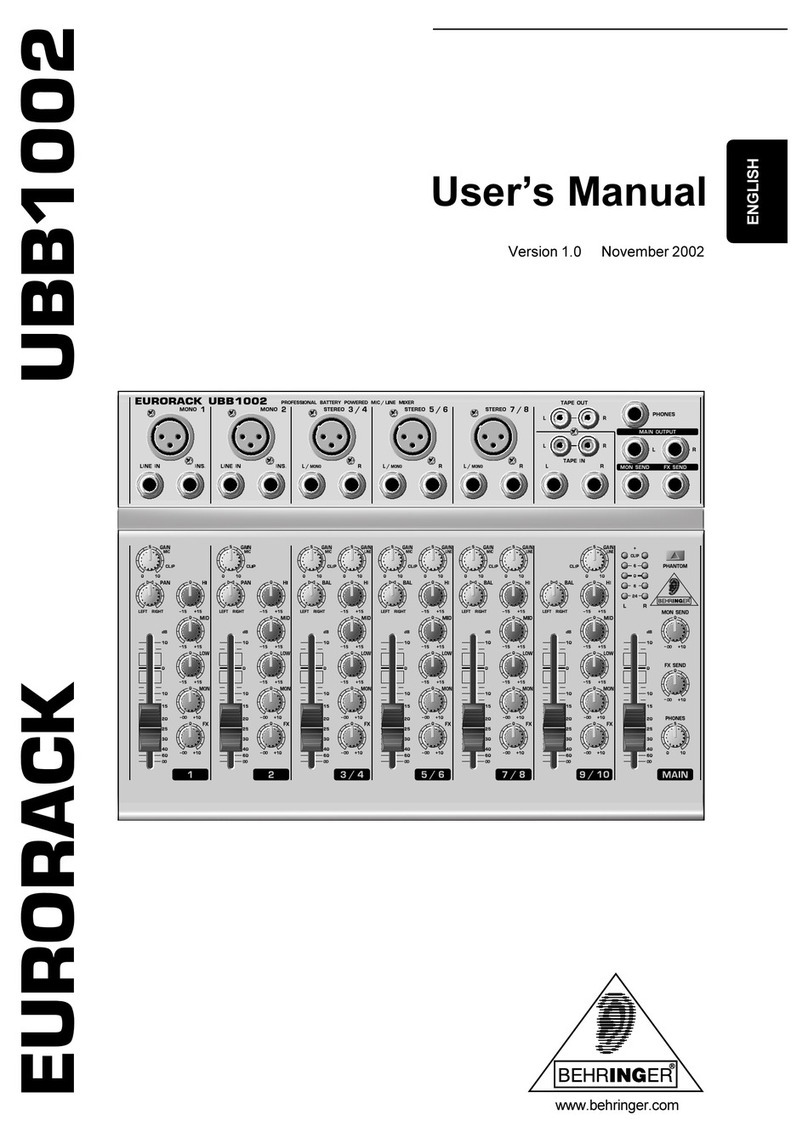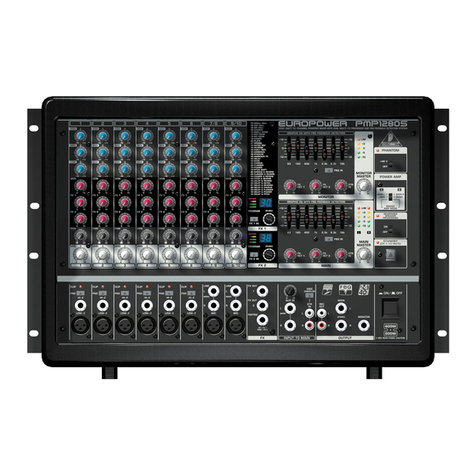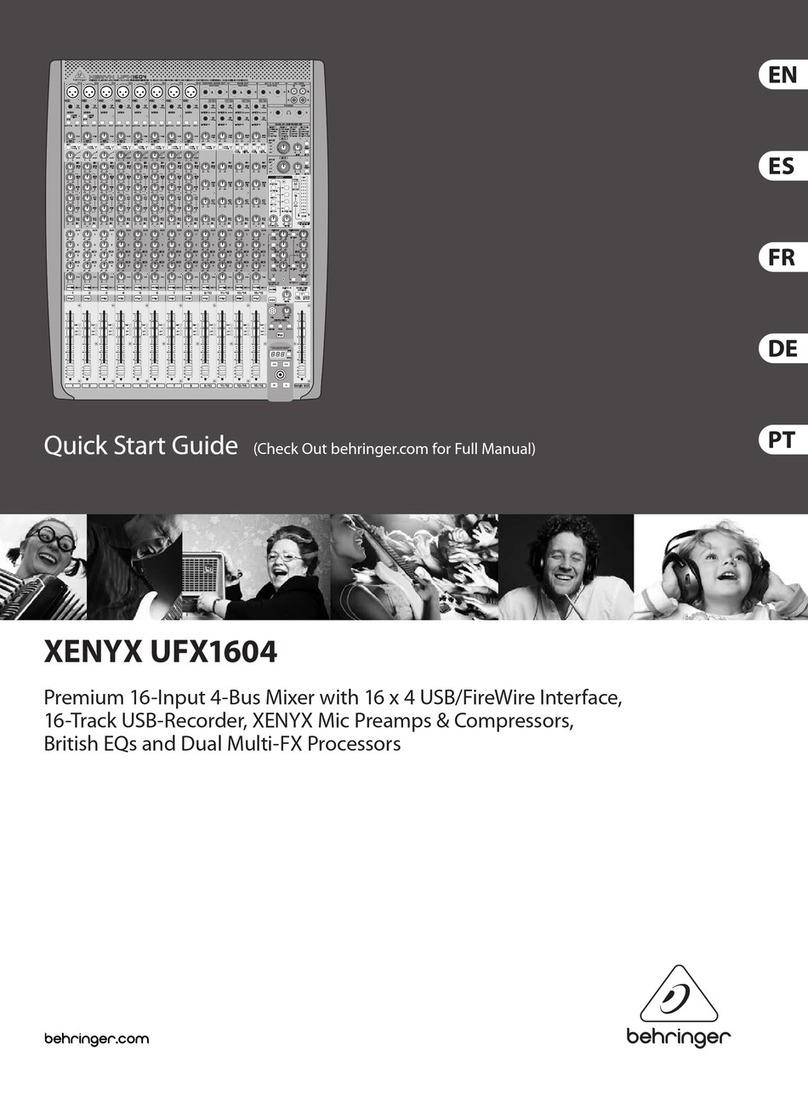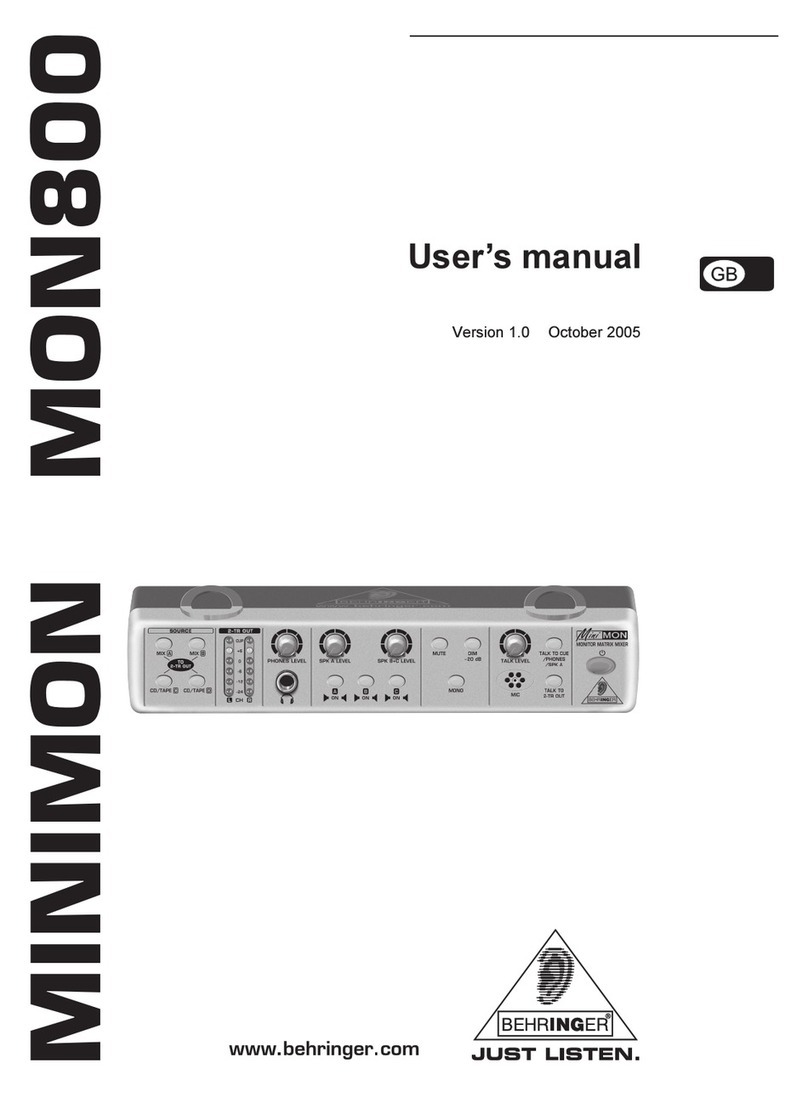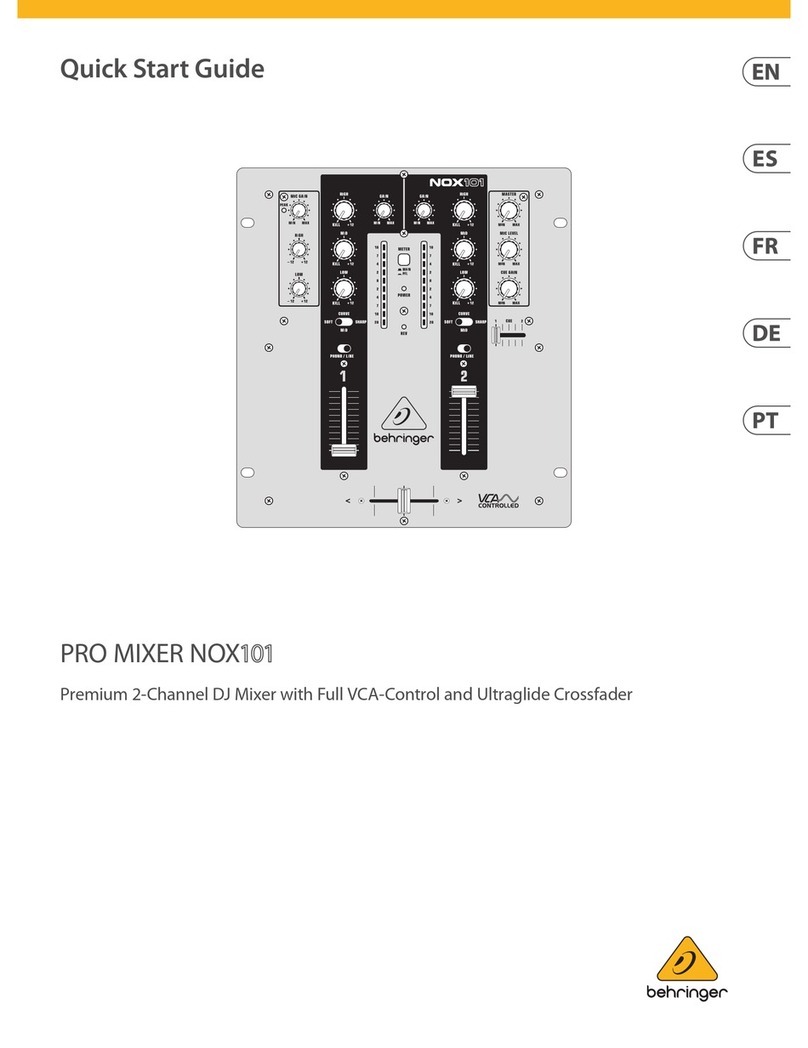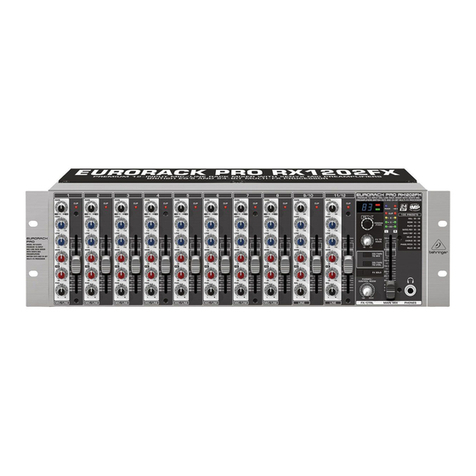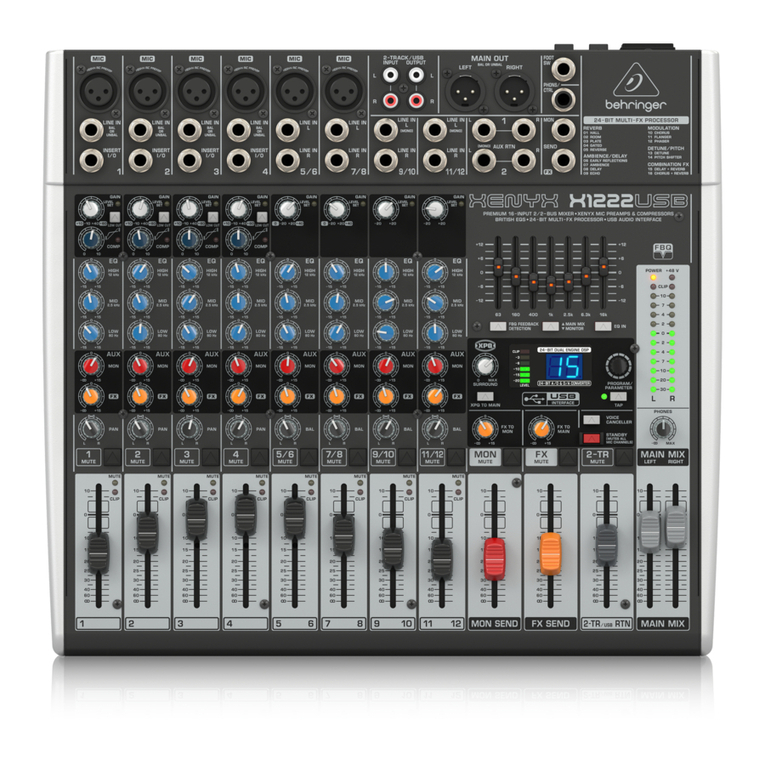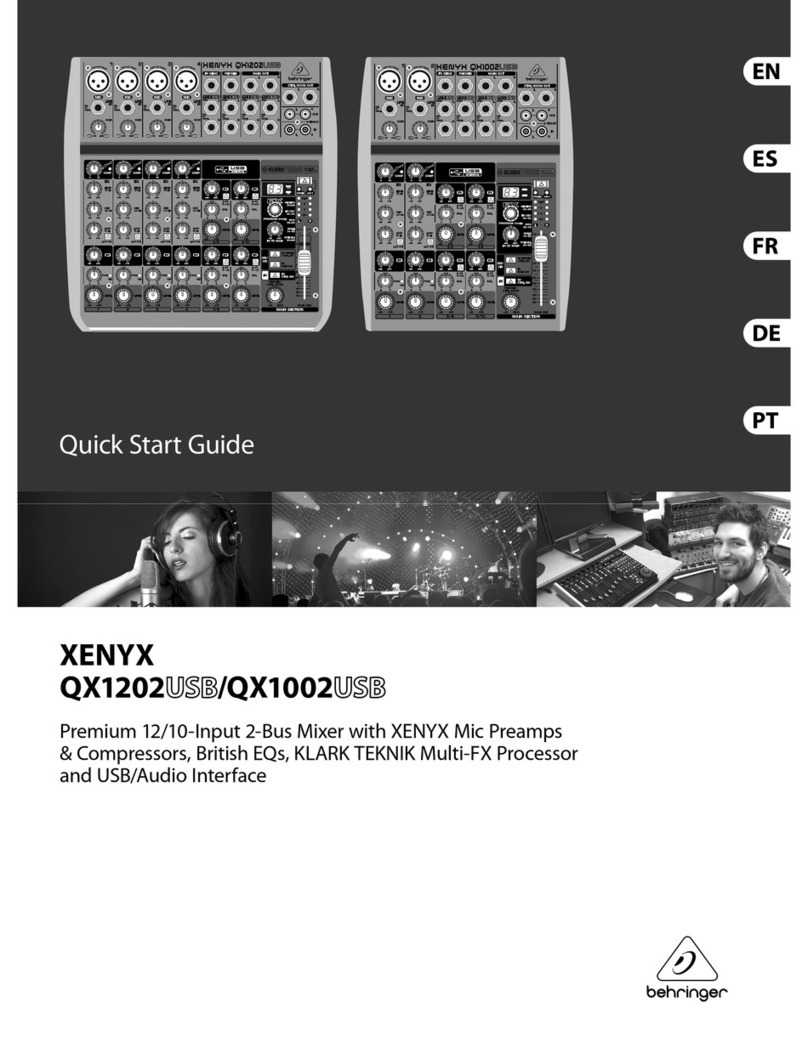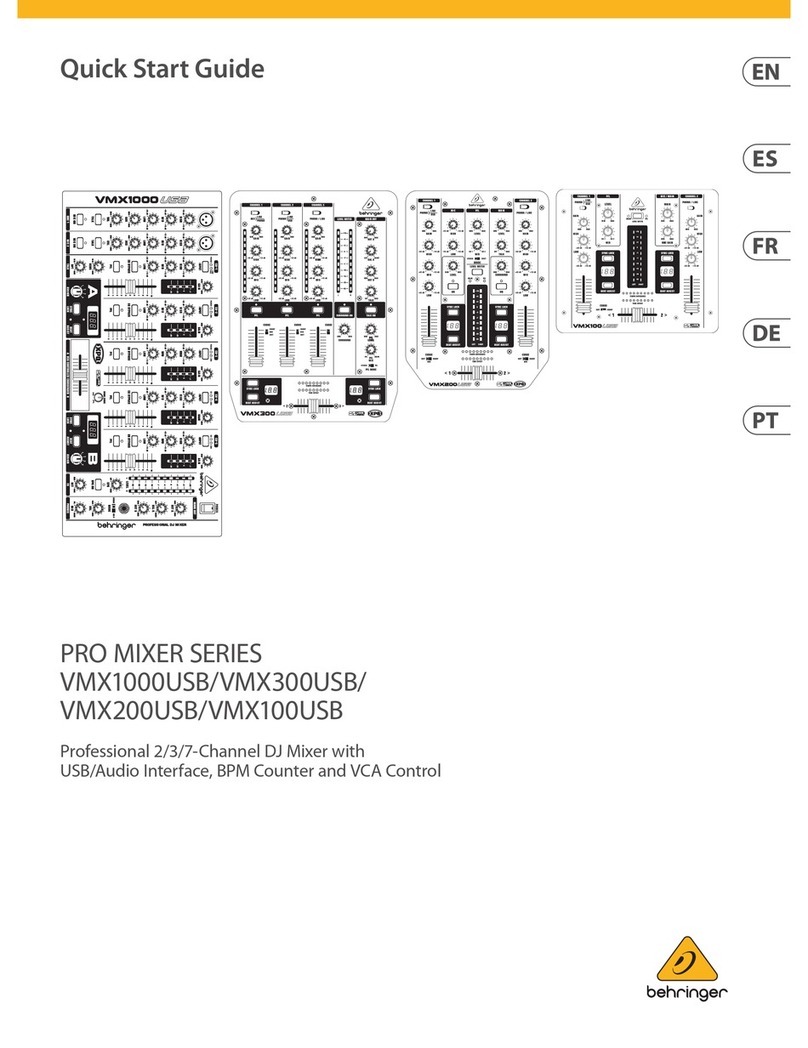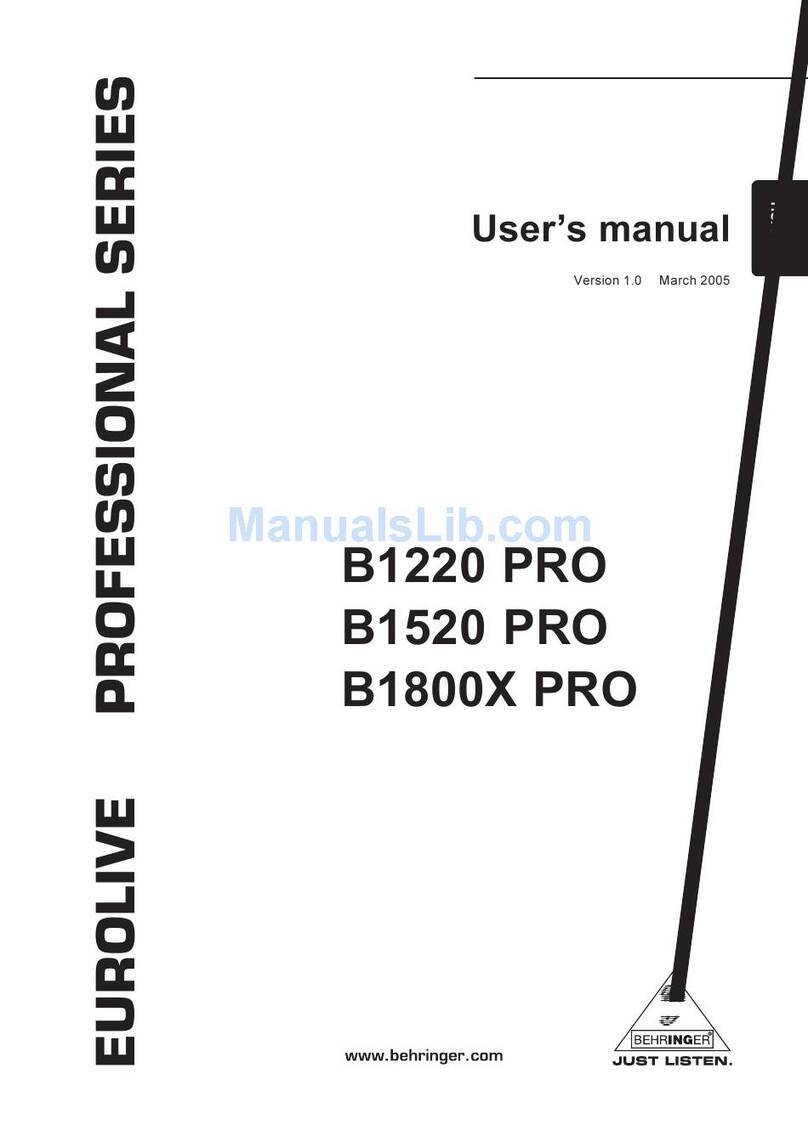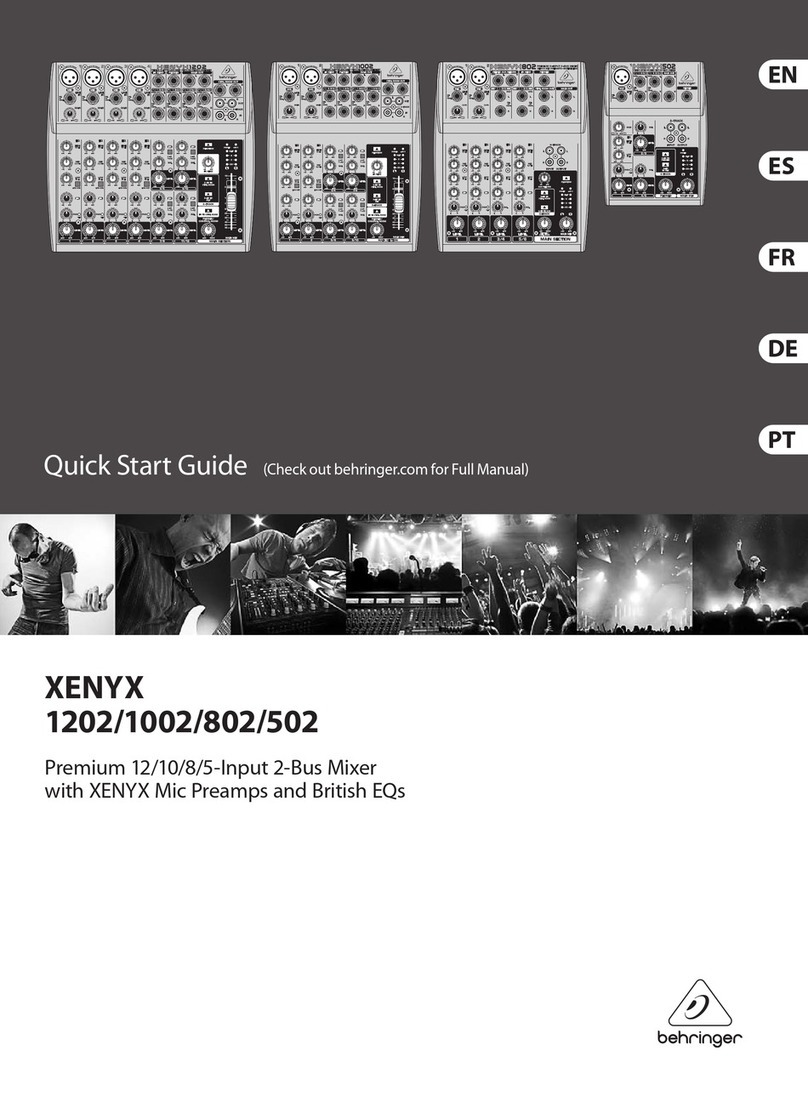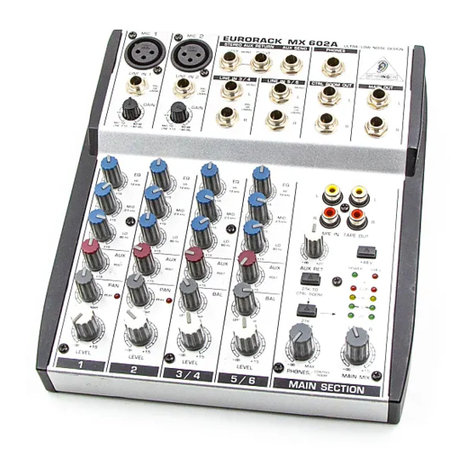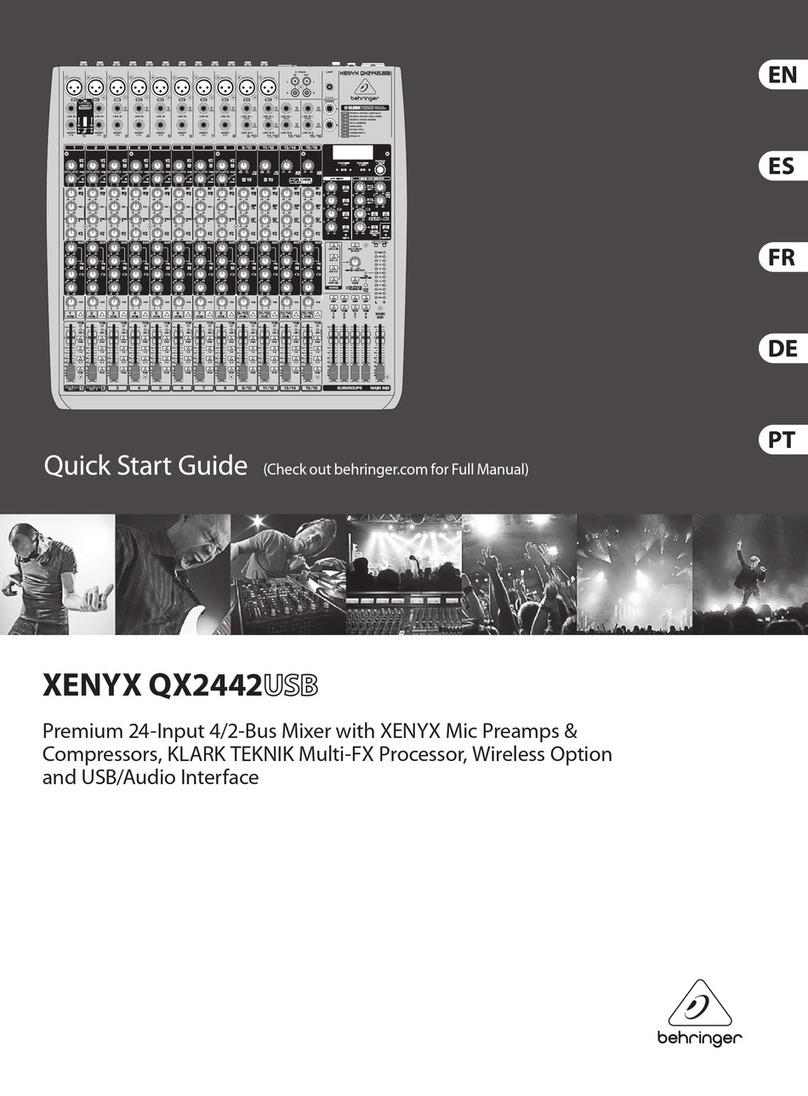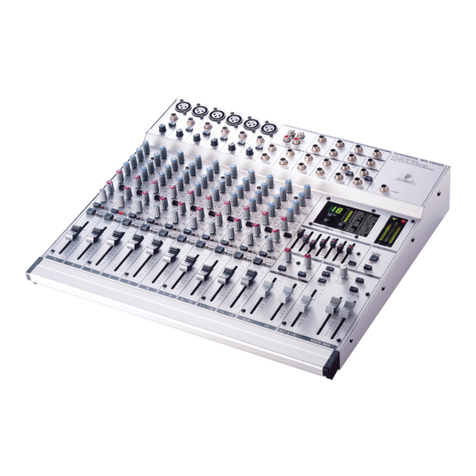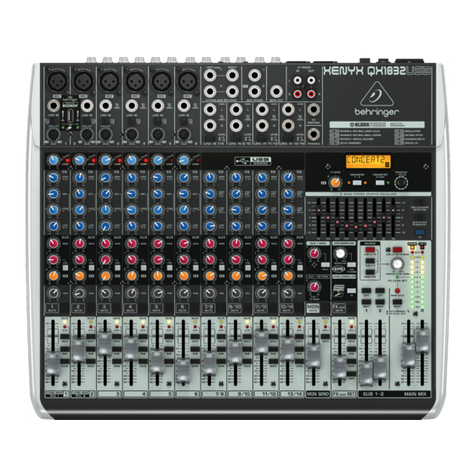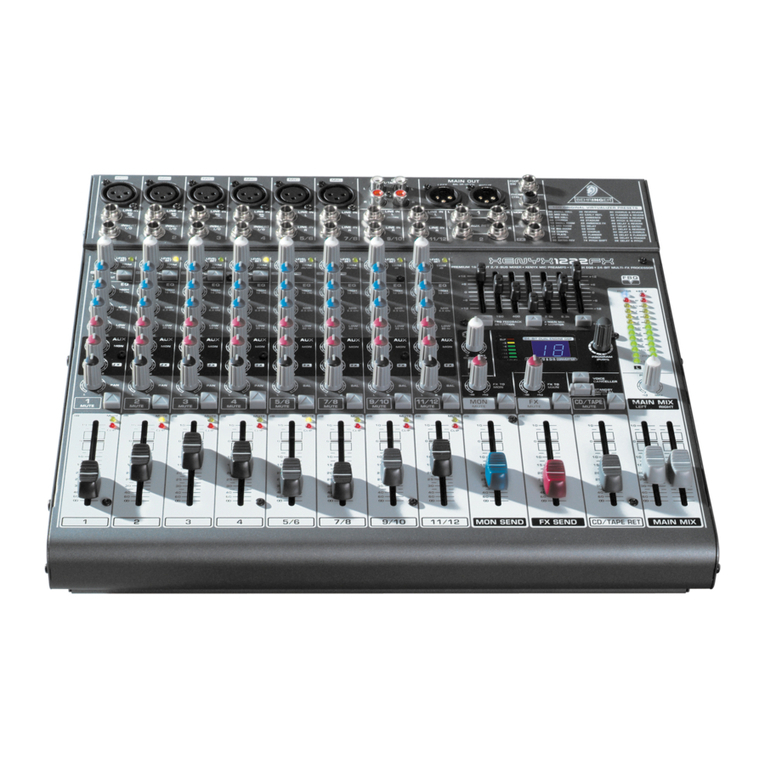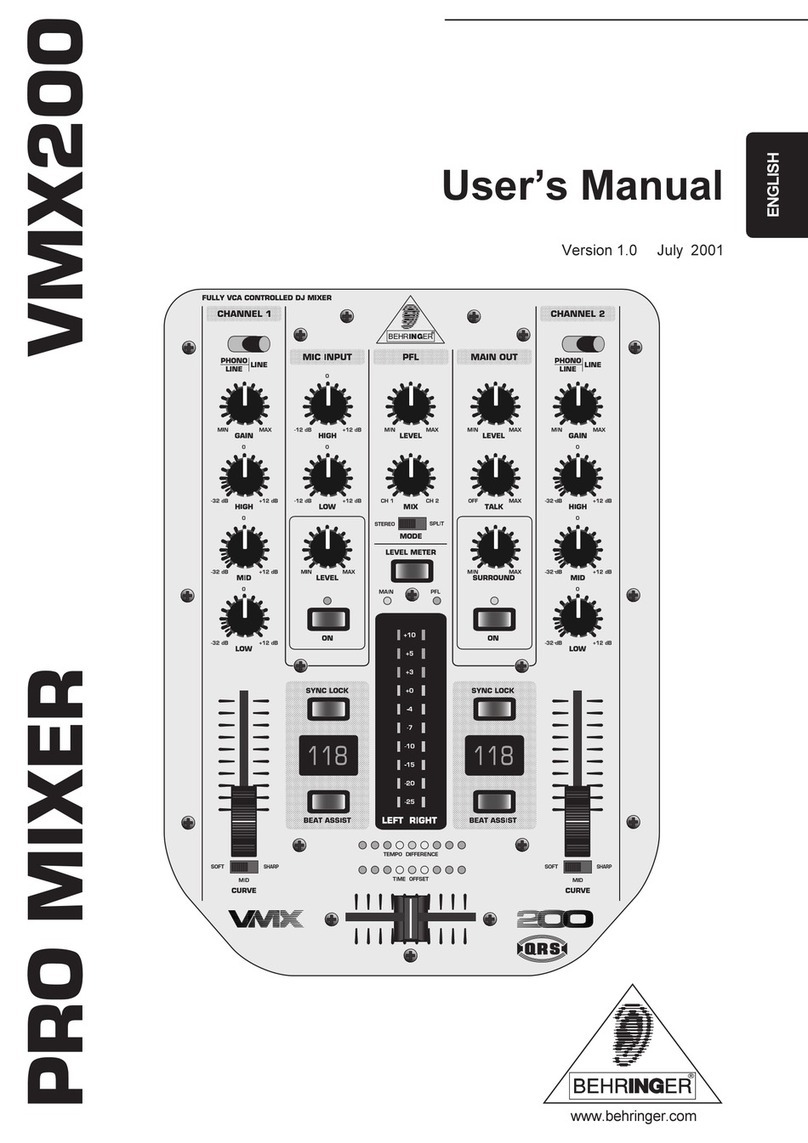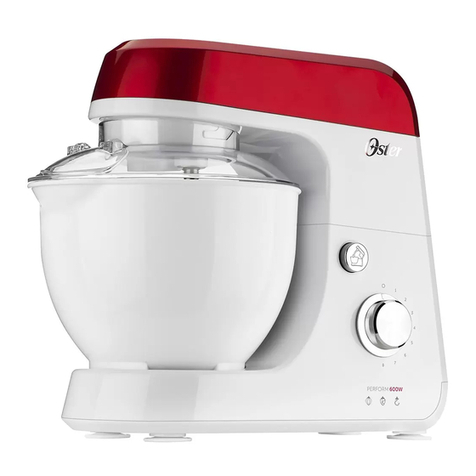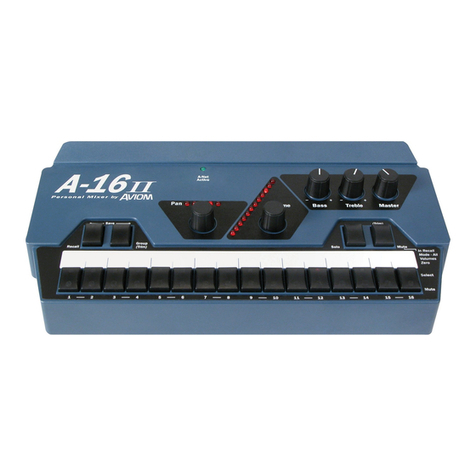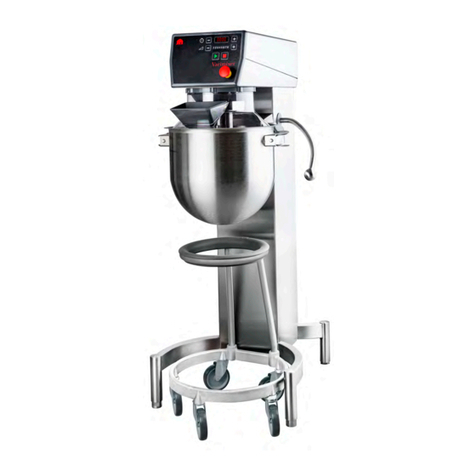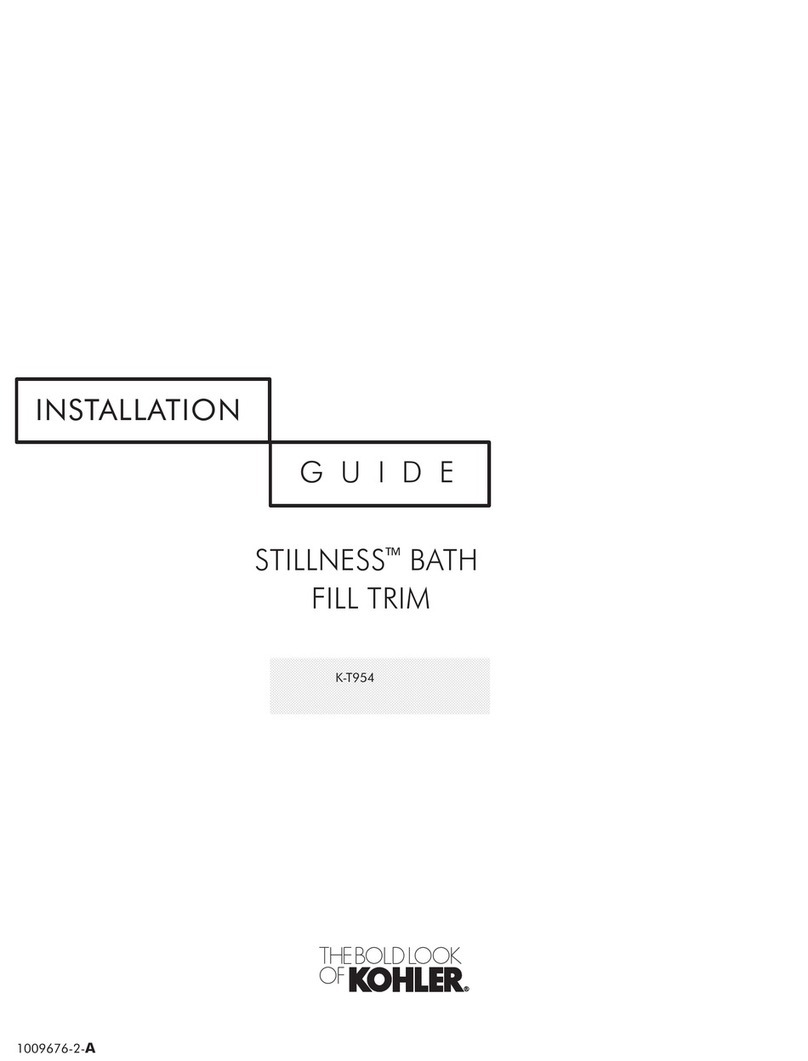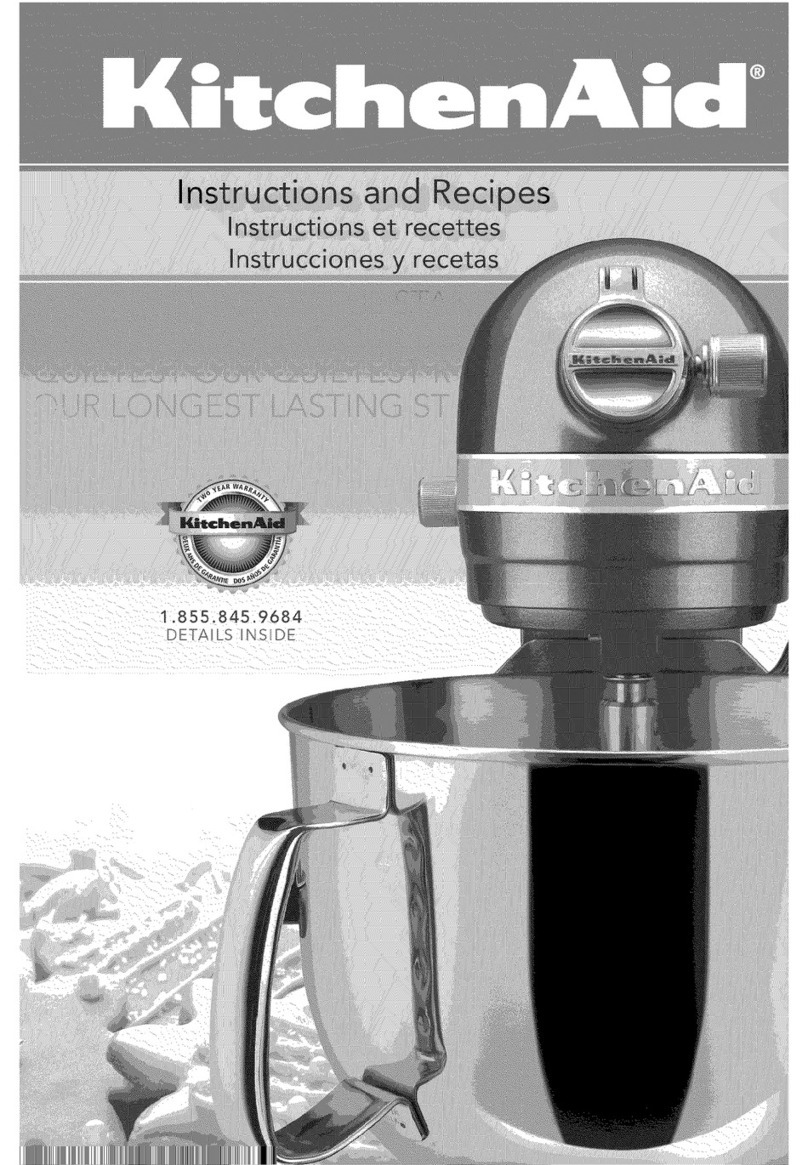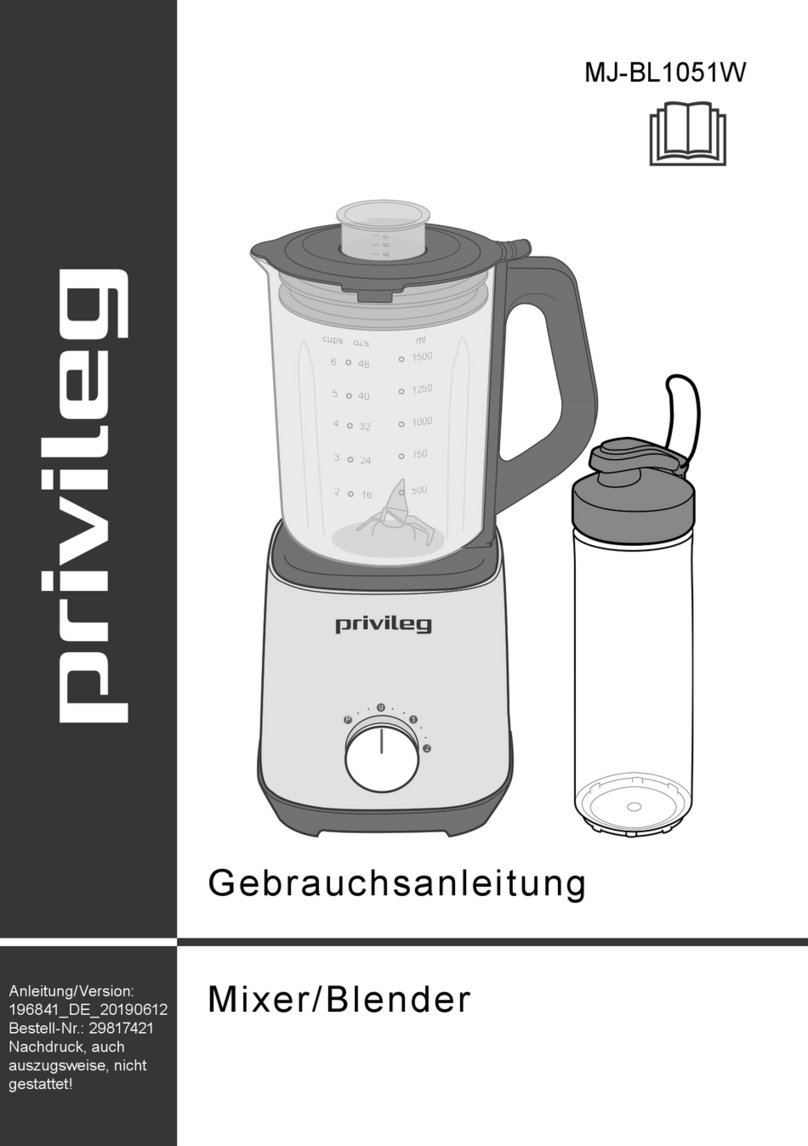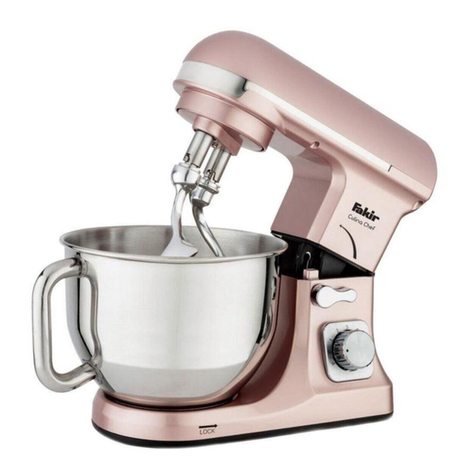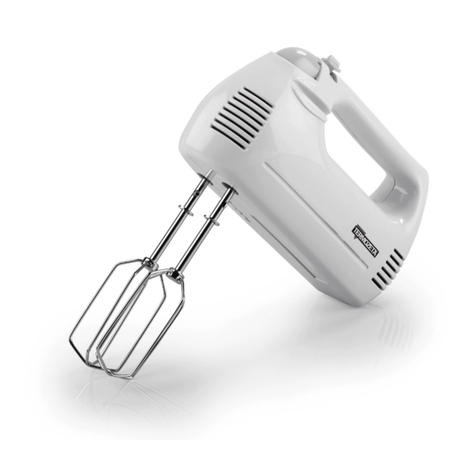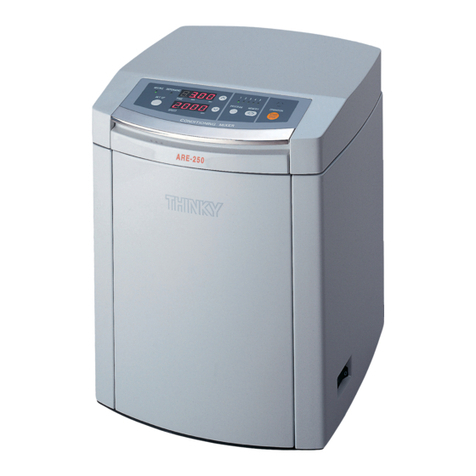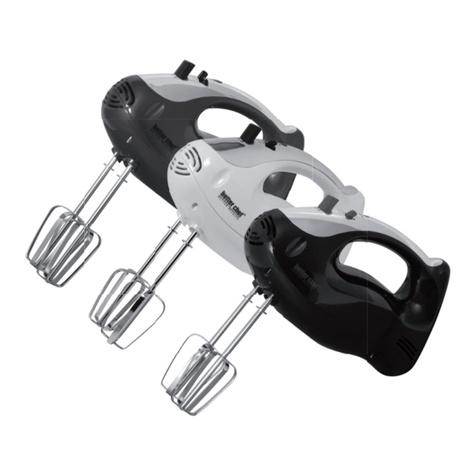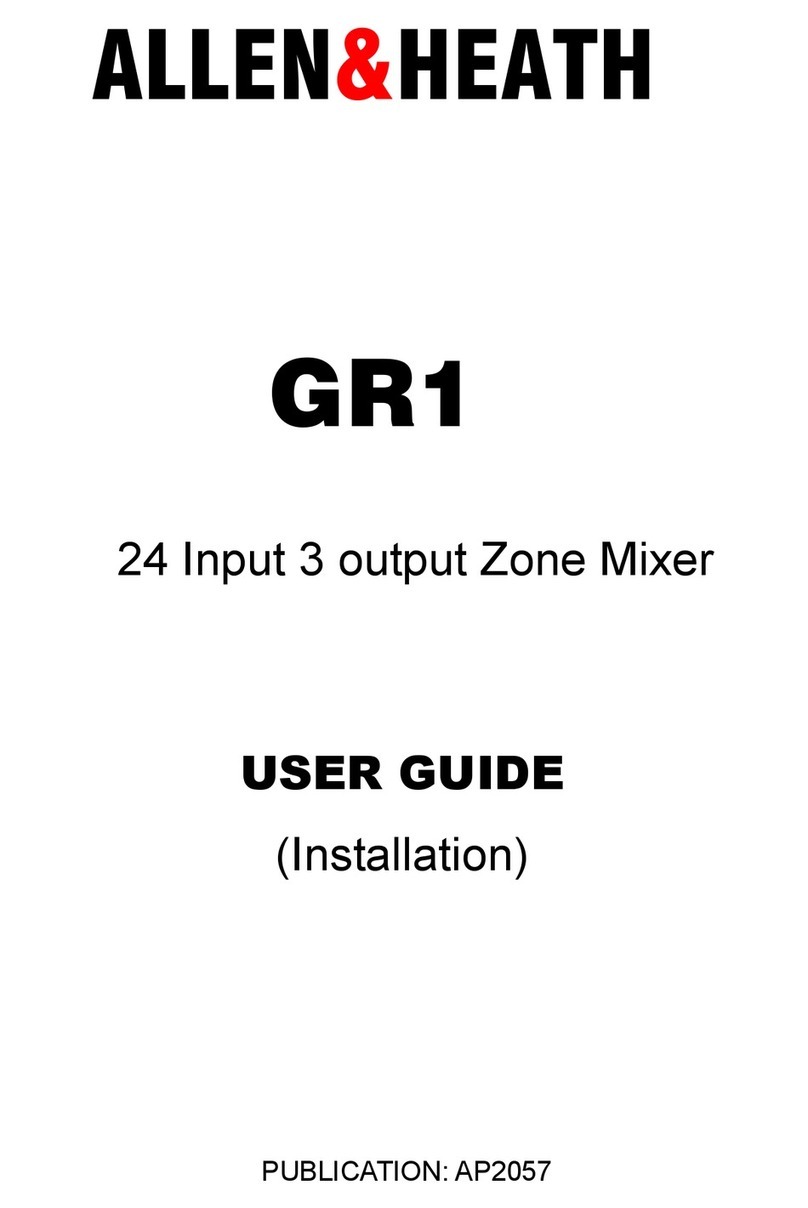5
EURORACKMX1804X
TABLE OF CONTENTS
1. INTRODUCTION.....................................................................................................................7
1.1 Concept .......................................................................................................................................... 7
1.1.1 Architecture .......................................................................................................................... 7
1.2 Beforeyou begin ............................................................................................................................. 8
1.2.1 Metering ............................................................................................................................... 8
1.2.2 PSU (power supply unit) ....................................................................................................... 8
1.2.3 Warranty............................................................................................................................... 8
1.2.4 Packing ................................................................................................................................8
1.2.4 RackmountingtheMX1804X ................................................................................................ 9
2. OPERATION............................................................................................................................9
2.1 Mono input channel......................................................................................................................... 9
2.1.1 Input level setting .................................................................................................................. 9
2.1.2 Equalizer .............................................................................................................................. 9
2.1.3 Aux sends ............................................................................................................................ 9
2.1.4 Routing,fadingand muting.................................................................................................. 10
2.2 Stereoinput channel ..................................................................................................................... 10
2.2.1 Inputlevel............................................................................................................................ 10
2.2.2 Equalizer ............................................................................................................................ 10
2.2.3 Aux sends .......................................................................................................................... 10
2.2.4 Routing ................................................................................................................................11
2.3 Inserting .........................................................................................................................................11
2.3.1 Mono channels ....................................................................................................................11
2.3.2 Stereochannels...................................................................................................................11
2.3.3 Main mix..............................................................................................................................11
2.3.4 Alt 3-4..................................................................................................................................11
2.4 Main section ..................................................................................................................................11
2.4.1 Aux sends ...........................................................................................................................11
2.4.2 Additional stereoline inputs ................................................................................................ 12
2.4.3 Metering ............................................................................................................................. 12
2.4.4 Channelmode..................................................................................................................... 12
2.4.5 2-track input andoutput ...................................................................................................... 12
2.4.6 Monitor section ................................................................................................................... 13
2.4.7 Alt 3-4 output ...................................................................................................................... 13
2.4.8 Graphicequalizer ................................................................................................................ 13
2.4.9 Digitaleffectsprocessor...................................................................................................... 13
2.4.10Talkback, communication with musicians in a studio .......................................................... 15
3. PRACTICE .............................................................................................................................15
3.1 Selectinginputs ............................................................................................................................ 15
3.2 Initializing channels forgain setting ............................................................................................... 15
3.3 Auditioning a signal and setting up a channels.............................................................................. 16
3.4 Desknormalization ....................................................................................................................... 16
3.5 Multitrack initialization .................................................................................................................. 16
3.6 Recordinglevels ............................................................................................................................ 16
3.7 Track sheet................................................................................................................................... 16
